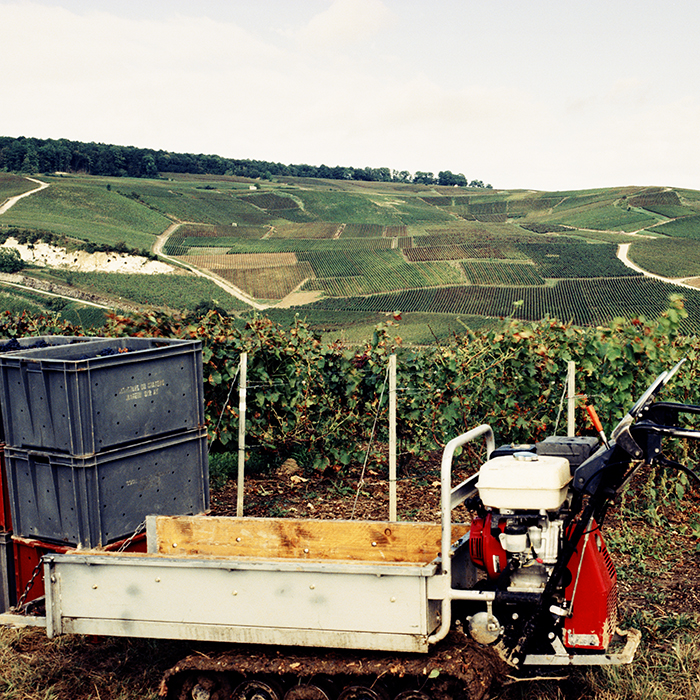2008 Champagne: tasting the prestige cuvées
Author: Edwin Dublin

The 2008 Champagne vintage is considered one of the region’s best ever. With most of the prestige cuvées now on the market, we asked Champagne Specialist Edwin Dublin to see whether the wines live up to the vintage’s reputation, and whether 2008 really is the best Champagne vintage
The 2008 Champagne vintage resulted in some of the greatest wines ever produced from this region. In fact, it’s hailed as one of the best Champagne vintages ever.
Why is 2008 Champagne considered great?
Some technical speak first. Why is ’08 considered such a great year? Winter was bitterly cold, which is great for resting the vines after a harvest. Late spring and early summer were warm with good conditions for flowering and early bud development.
Fears of rot were quickly overcome. Yet the rest of the summer was gloomy, especially August, which was cool and grey. But then the sun came out and temperatures rose for beautiful ripening and harvest from mid-September.
For recent times this meant a relatively long grape development. Producers harvested healthy grapes, with an excellent balance of sugars, flavours, aromatics and acidity. This combination meant that many Champagne houses released their more forward and exuberant 2009s before the 2008s.
The style of the 2008 vintage
Broadly speaking the 2008 vintage character and style is one of soaring acidity and freshness beautifully balanced by generous fruit and a depth of concentration. For now, it can feel a little tight. Comparisons have been made to 1996 and 2002. When considering the harmony and balance of the wines, 2008 is greater. And despite some tightness, the ’08s are often more approachable at this stage than either 1996 or 2002 at a similar stage.
And so to the vintage wines: below is a sketch of what I thought of them, in alphabetical order. The common point in all of these is that 2008 serves either to accentuate the prestige House style or else holds it (for now, at least) in a delicious state of tension. Longevity is a given here. The only question is how many decades to age the wines for.
And, of course, how you enjoy you drinking these: with youthful exuberance or with the greater complexities of maturity?
What is a prestige cuvée?
There is no regulatory definition: they are basically the top wine (or, increasingly, wines, if one thinks of Dom Pérignon’s various iterations P2, P3 etc, or single-vineyard Krug) made by Champagne producers using their very best grapes.
2008 Champagne Bollinger, La Grande Année: A classic Bollinger, statuesque with oodles of black cherry fruit and a light dusting of oak spice. But before the power overwhelms you, the Chardonnay shimmies on through to counterbalance the weight, adding freshness and light. There is a concentrated core that remained unfurled even after time in the glass. (NB Grande Année is, strictly speaking, not a prestige cuvée, but earns its place as it will go on to become – I presume – their prestige RD cuvée.)
2008 Champagne Dom Pérignon: No matter the vintage, Dom Pérignon is invariably ready to go from release. Once again that hedonistic charm is combined with a complexity and elegance that belies this. All is beautifully placed. Brioche, hazelnut, buttercream here, citrussy minerality there, a touch of dark forest fruit, all kept in place by that ’08 structure, so that it never quite goes over the top.
2008 Champagne Pol Roger, Sir Winston Churchill: Impressive at first, this seems almost too much to approach, but then all becomes clear. It’s a bit like Winston himself, who would surely have approved of this. Wild strawberry and morello cherry scents firm up on the palate, woven through with a zesty almost limey touch. All contribute to Pol’s trademark combination of majesty and elegance in a glass, leading to the richest of mouth-filling finishes that never seems to end.
2008 Louis Roederer, Cristal: Waves of intoxicating Pinot fruit waft up – pure, concentrated, with a touch of violet. The palate is both weighty and airy – Pinot Noir on wings. The more calcareous Cristal terroir (and perhaps the 40% of biodynamic grapes?) is evident here, giving a more mineral and scintillatingly sinuous encounter now, with the promise of so much more to come.
2008 Champagne Taittinger, Comtes de Champagne: Despite a nervy tension, that wondrous Comtes richness is still at the fore, and the Grand Cru provenance is clear. Did I detect Mesnil in those agrumic notes; Oger in the yuzu? A breadth of fruit structure in the touch of oak used in the Chouilly fruit? Even in this most structured of vintages Comtes is a (slightly) guilty pleasure to drink.
2008 Champagne Veuve Clicquot, La Grande Dame: Veuve’s chef de cave felt that the ’08 cuvée, always Pinot Noir-dominant, needed the most it’s ever had – 92%, surely the highest of all the blended cuvées tasted today (we never know what goes into the Winston, of course). Despite this the nose is more leesy than fruit and it’s on the palate where you first get that Pinot hit: a line of pure fruit that broadens with time.
The 2008 vintage is the gift that keeps on giving. Watching these develop over the years, and with still more releases to come, I – for one – can’t wait.
If you’re interested in purchasing any of the wines detailed above, please contact our Fine Wine team on 0203 301 2883 or at finewine@bbr.com, or explore all 2008 Champagne on bbr.com


